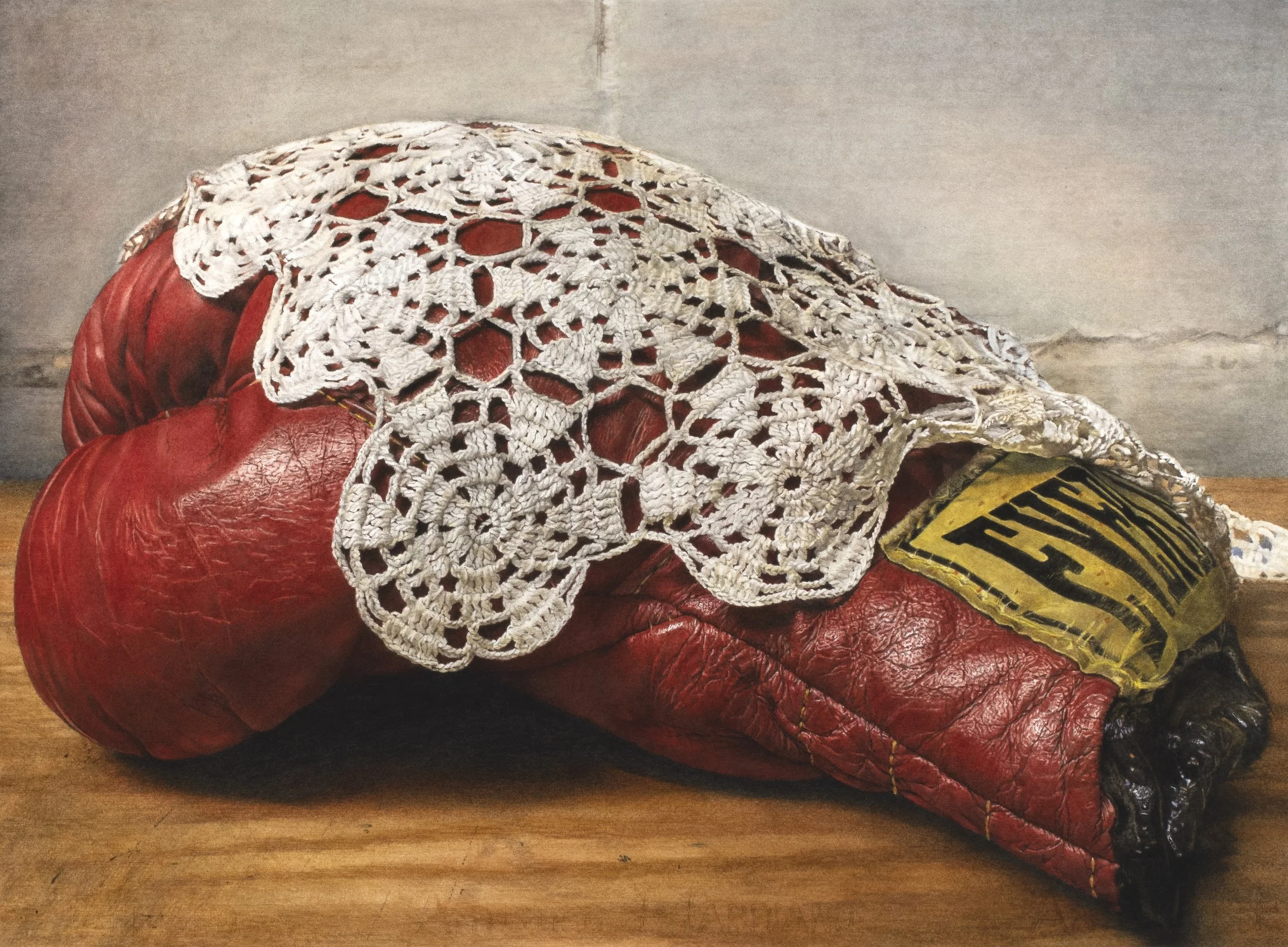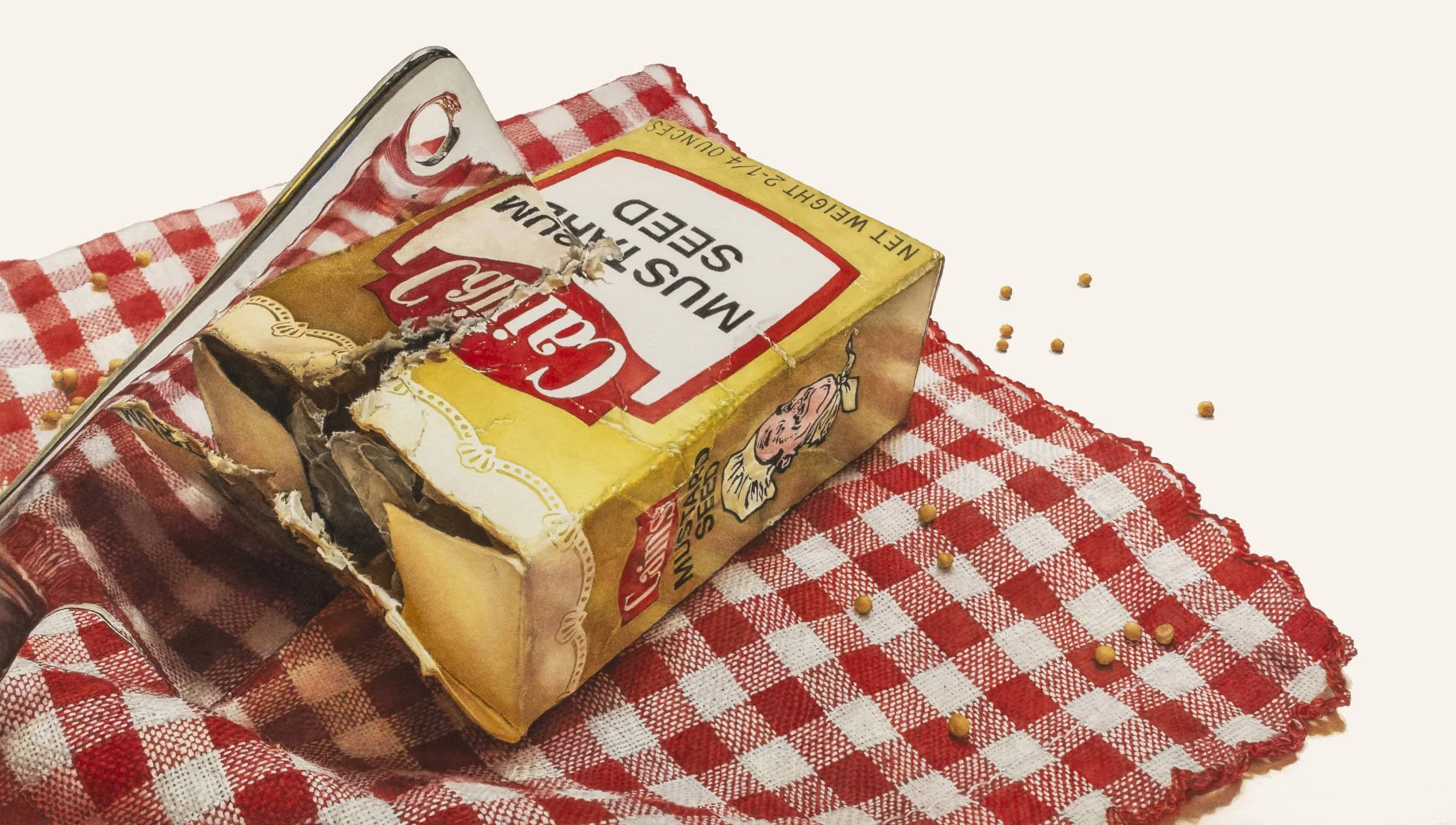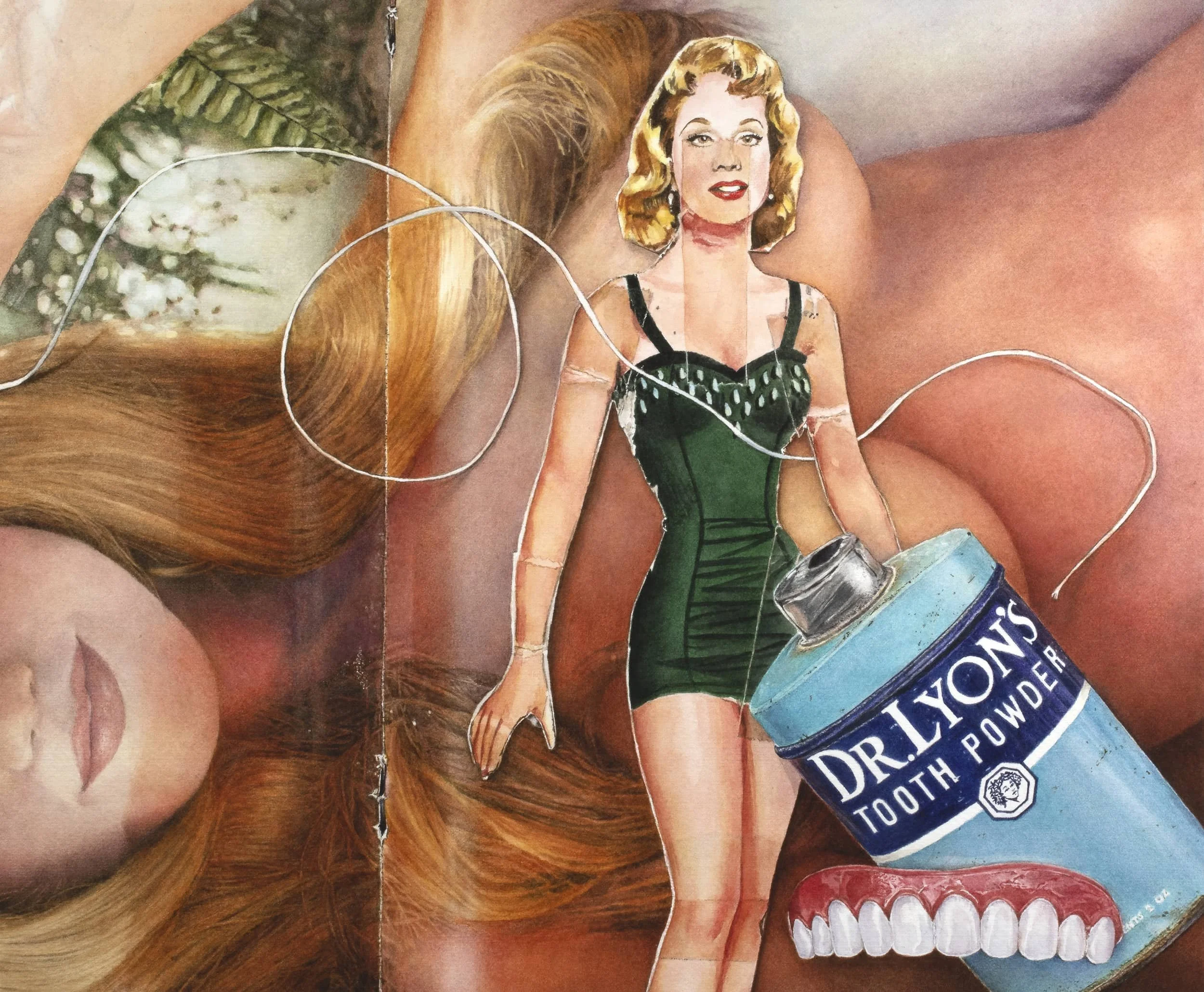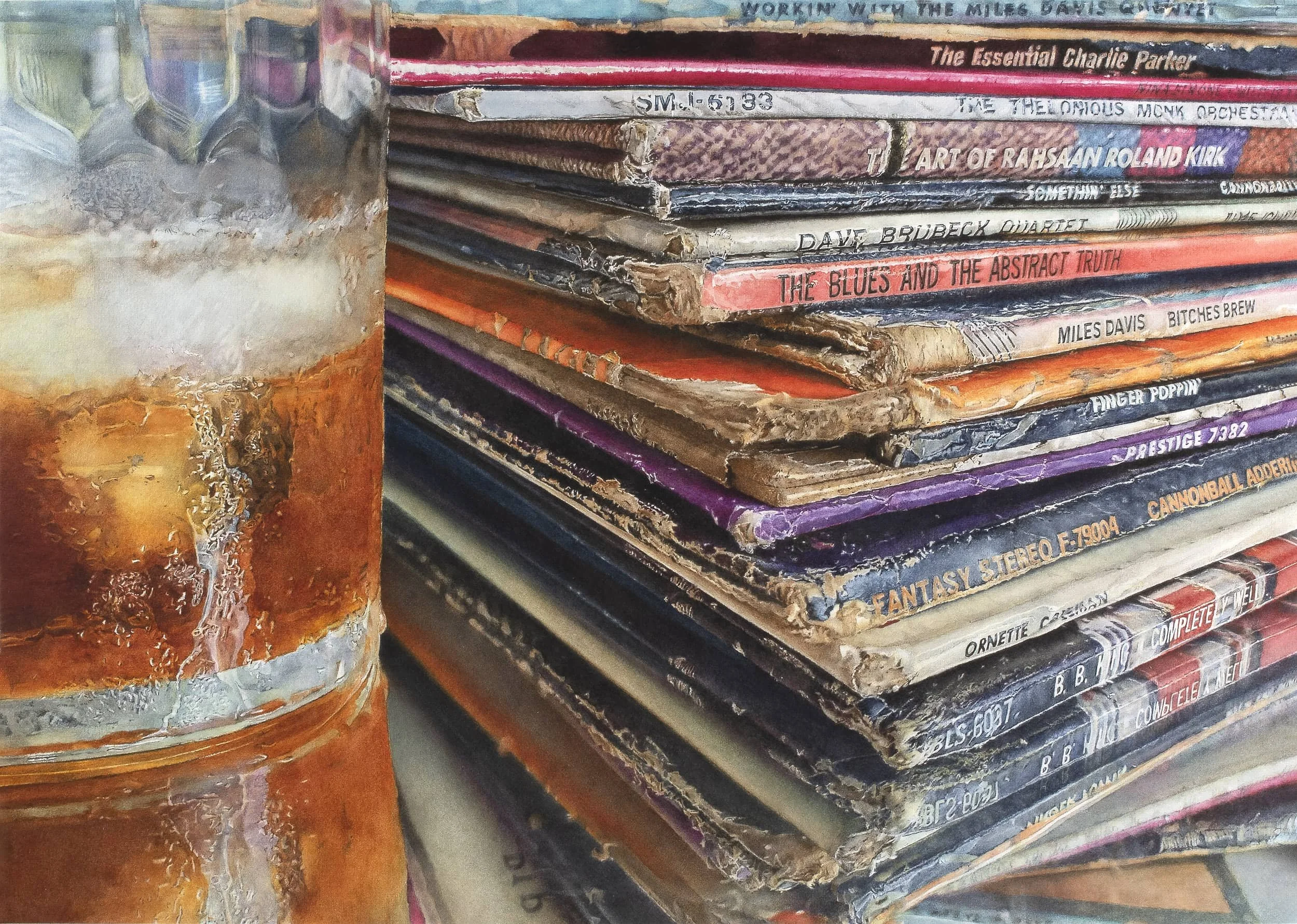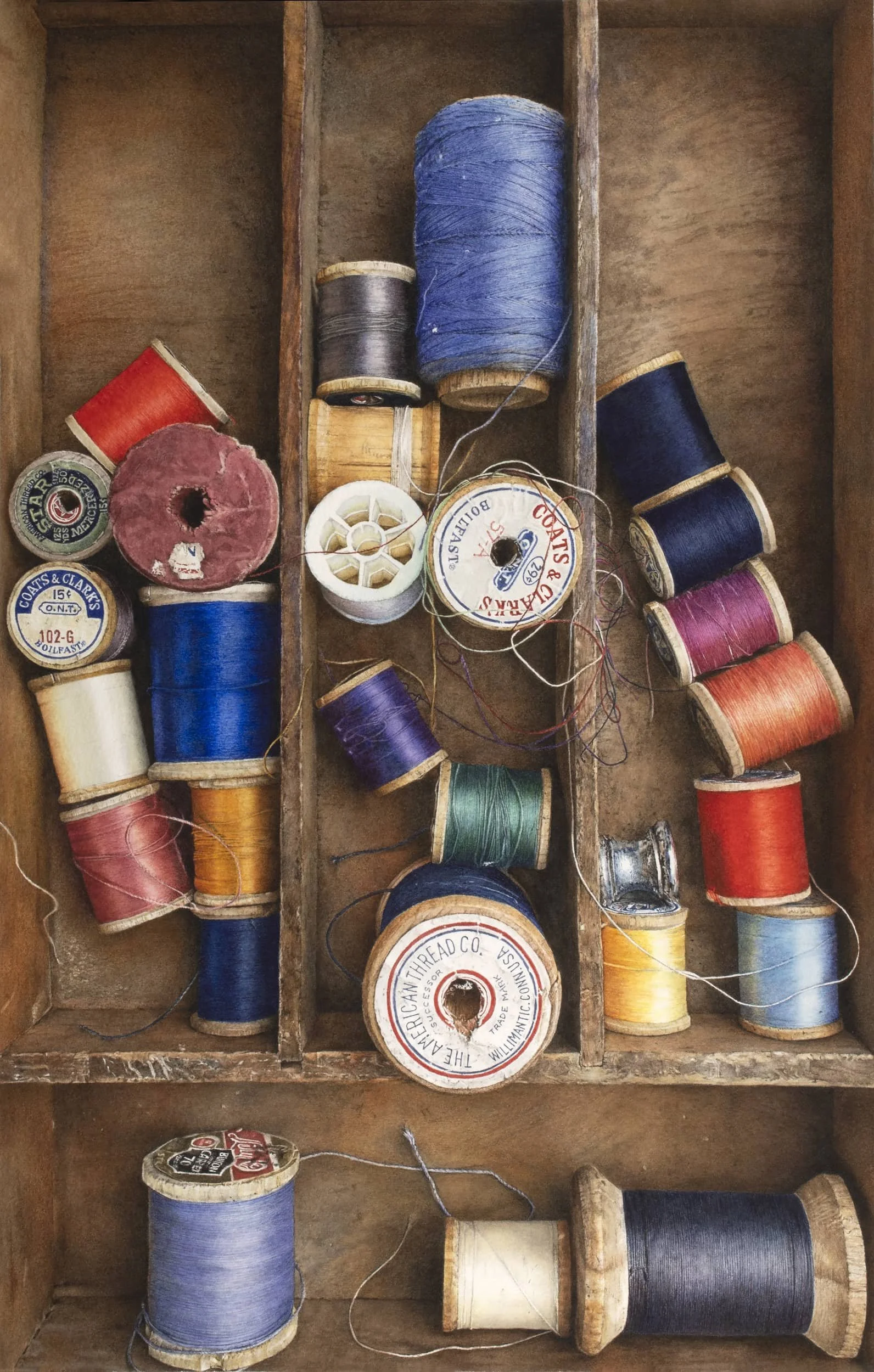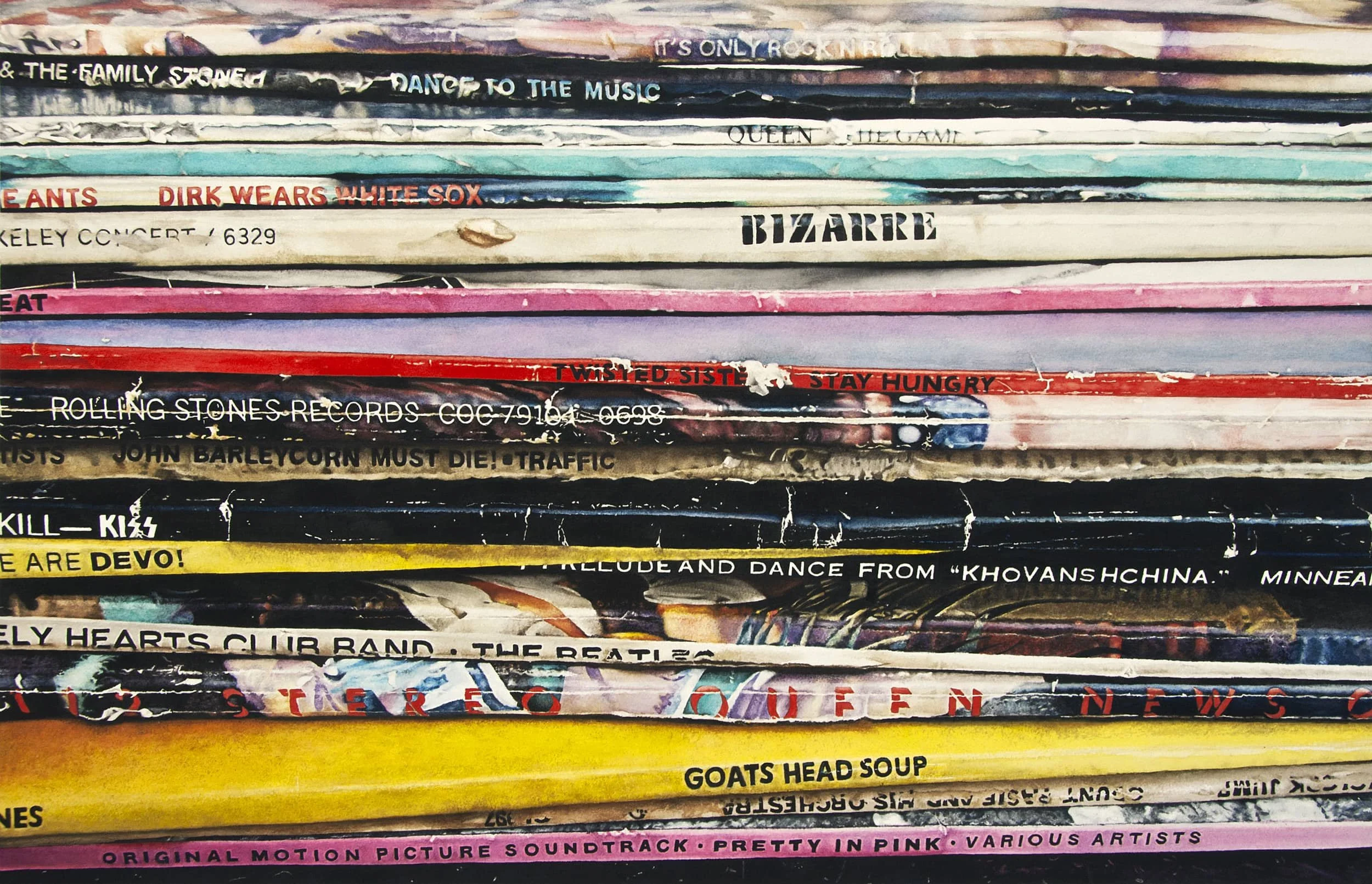Artist Alisa Shea
Congratulations to Alisa Shea for earning her place as a finalist in the 5th Edition!
Who are you?
Making art was the only thing I wanted to do for as long as I can remember. Growing up, this passion was encouraged, but less so as I approached adulthood. I was accepted into the College of Fine Arts at the university of my choice, but before I could even set foot on campus, my parents got cold feet and insisted that I change course. As an 18-year-old kid whose parents were still writing the checks, I went along with their plan to study occupational therapy (OT) instead of art, not fully appreciating what impact this decision would have on my life years down the road.
Not surprisingly, I found myself unhappy with OT after only a few years. Convinced that I could never get back into art, I enrolled in graduate school for health policy instead. I met and married a neuroscience PhD student and became the primary breadwinner for our household for the duration of his doctoral and post-doctoral studies. Before I knew it, we had two young boys, moved to Long Island for work, and settled into two demanding new jobs. We hired a full-time sitter for our sons.
But then my husband was diagnosed with early-onset Parkinson’s Disease (PD). Our sitter became wildly unreliable and I felt like I was juggling chainsaws trying to manage my demanding job with two young children and no stable support system. I sat down to do the math and realized that after childcare expenses, my salary was barely enough to cover our monthly grocery bills. And I was deeply unhappy.
So I quit my job--for sanity; for balance; for financial reasons. Because my husband’s PD diagnosis made it clear that you never really know what’s coming next in life and I had already waited far too long to pursue anything that actually gave me joy. I like to joke that I had a mid-life crisis because my dramatic career change came just before my 40th birthday, but it was really a crisis I’d been having since age 18--I just finally got the courage to take charge and change course.
“A Feminine Touch” (Finalist Winning Work)
Transparent Watercolor
By Alisa Shea
What inspired you to begin utilizing watercolour as a medium?
Shortly after I quit, I signed up to take a 6-week “Watercolor Kindergarten for Adults” class at the Art League of Long Island because I wanted to start my foray back into creativity with something challenging and new. Watercolour was a medium I knew absolutely nothing about and found completely intimidating, so it seemed like a logical place to start. I could write an essay about why I love watercolour, but it’s the medium’s less sexy qualities that I appreciate the most: I can start- and stop in random intervals, and there’s virtually no clean-up. I have two busy school-aged children and a needy bulldog. My ability to sit down and paint uninterrupted for long stretches is extremely limited. With watercolour, I can paint for 20 minutes here, 30 minutes there, and just leave everything out until the next time I can steal a few minutes away.
“Cutting The Mustard”
Transparent Watercolor
By Alisa Shea
Given the realistic style of your work, why did you decide to utilize watercolour as a medium?
I’ve always been obsessed with intricacy and tedious detail. One of the reasons I am compelled to create art is because the process serves as a soothing mental balm for me. I struggle with anxiety, but when I am painting, that completely disappears and I become lost in colour and shadow and all those tiny little elements. I’ve tried painting in a more quick and loose style, but that just doesn’t provide me with the same kind of mental relief that tight photorealism does.
Painting in watercolour just ups the ante. With watercolour, I have to do much more problem solving--figuring out how to save my whites and in what order I should approach the various components and layers of my subject--and I have less ability to correct for errors. These additional challenges amplify the level of concentration required, and that only enhances the experience of flow and enjoyment for me.
“Smile, Sweetheart”
Transparent Watercolor
By Alisa Shea
Can you discuss the inspiration and thought process behind "A Feminine Touch"?
I’ve been asked this before, and my short answer is, “feminist rage.” Lol… I think the painting kind of speaks for itself. I’m particularly interested in women’s rights and gender inequality and have grown increasingly angry as I’ve watched the pandemic and the current political environment in the United States exacerbate the problems that women face. I am also routinely frustrated by the underrepresentation of women in the arts. “A Feminine Touch,” is really just a simple statement about the strength of women and a readiness to fight for equality, safety, dignity, and respect.
“In The Key Of W”
Transparent Watercolor
By Alisa Shea
What drew you to exploring still life as a subject matter?
Tucked in the pages of my baby book is a yellowed piece of paper with a crayon still life of fruit in a wicker basket. I’ve been drawn to still life and realism for as long as I can remember, producing representational art even as a preschooler. The first real juried art show I ever won was in high school with a photorealistic coloured pencil drawing of a broken wine glass stuffed with tiny wooden doll head beads… ON A MIRROR. I have a strong aversion to portraiture and landscape art; I can definitely appreciate a well-executed work in these genres, but they just don’t speak to me personally as much as still-life paintings do. It’s just my personal preference.
“Common Thread”
Transparent Watercolor
By Alisa Shea
Can you talk about your biggest learning experience during the process of painting your works?
In 2018, upon being juried into one of the most prestigious international exhibitions in my medium, I had the opportunity to apply for “Signature Membership” in the sponsoring society. Giddy with excitement, I sent three additional pieces to be juried by a panel of accomplished watercolor masters.
My application was declined. The news was conveyed to me via telephone and included one particularly memorable piece of feedback, “Your work was generally considered not up to snuff.” (Emphasis mine?)
Within days, my set of vintage snuff jars from eBay was delivered. And once that demon was exorcised, I continued to explore other English language idioms meant to convey competency in one’s endeavours. My three painting “Failure Series,” was the final, cathartic product; tongue planted firmly in cheek.
Although having my application declined was pretty devastating at the time, the work that resulted from my frustration with that went on to earn me a huge amount of success. I earned significant prize money from exhibiting this work in various competitions; one of the paintings was selected as the cover image for a museum show; I appeared in Fine Art Connoisseur and had a 6-page spread in Watercolor Artist magazine showcasing this work and the story behind it.
Then in 2021, I was selected for exhibition with this society for a second time and therefore had the opportunity to apply for Signature status again. There was no question in my mind that THESE were the three paintings I would submit to the jury.
And I got in.
It was a very “full circle” moment and definitely taught me that every challenge or setback is really just another opportunity for growth and future success. It changed my perspective on perceived failures in a very positive way.
“Rock & Roll”
Transparent Watercolor
By Alisa Shea
What projects are you working on currently? Can you discuss them?
I’ve got enough feminist rage built up to paint about that for quite a while ;) I definitely intend to do more statement works, with a focus on women’s issues.
“Worth My Salt”
Transparent Watercolor
By Alisa Shea
Lastly, I like to ask everyone what advice they would give to their fellow artists/photographers, what is your advice?
My advice is to be the squeaky wheel. I've done a lot of speaking out about things, both verbally and through my work--about white, male dominance in my medium; about the plethora of issues facing women right now; about irresponsible art journalism. Each time I've done this, I am surprised by the amount of positive feedback I have received, both publicly and privately. Rather than hurting my career, I believe that being vocal about issues that matter to me has only helped to strengthen my work as well as my relationships with both colleagues and collectors.
To view more of Alisa Shea’s work
